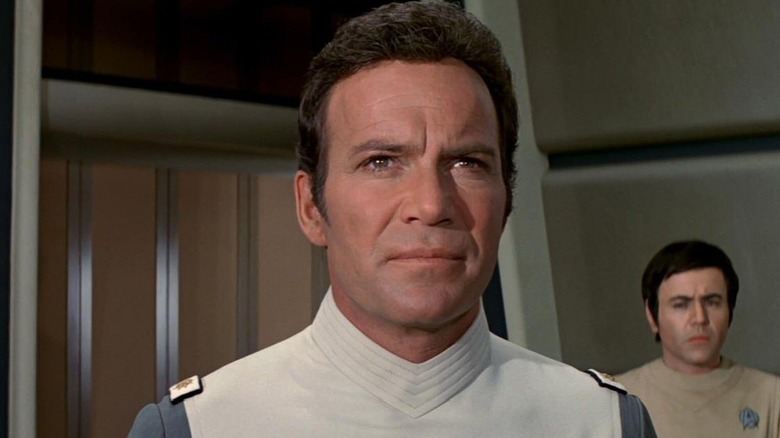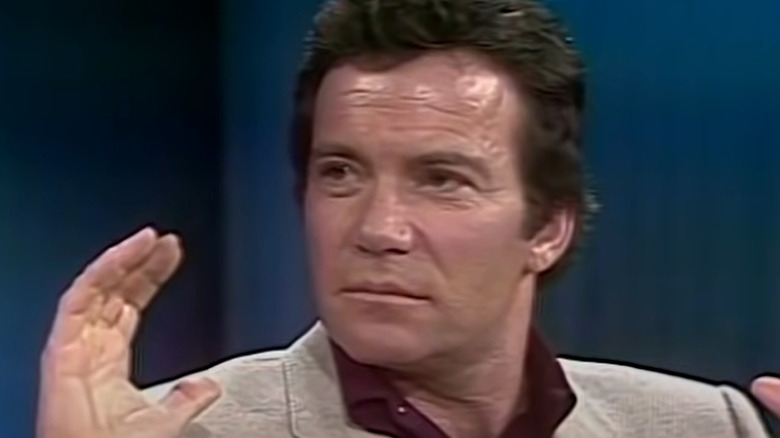William Shatner Says The Star Trek Movie Finally Showed The Series' Potential
It had been a decade since the last episode of "Star Trek" aired when the franchise finally hit cinemas in 1979, and the results were mixed. For a lot of people, "Star Trek: The Motion Picture" is remembered as a largely joyless slog, the passion project of a micromanaging, borderline-obsessive creator with a vendetta against the studio system and a problematic streak the size of the Neutral Zone.
But life is all about perspective, and even in the dark moments, when a franchise about talking out your problems and philosophizing pointedly is failing to live up to the "Star Wars"-adjusted expectations of the filmgoing public, there are victories to celebrate. In particular, William Shatner, who played obscure background character James Tiberius Kirk in a handful of outings, heaped a lot of praise on the way that the first "Star Trek" movie managed to move expectations for the franchise from styrofoam boulders and matte painting backgrounds to the limits of the imagination. Or the limits of the budget. Whichever ceiling got hit first.
Star Trek: The Motion Picture boldly went and looked good doing it
William Shatner made his assertions during a 1979 interview with television personality Bill Boggs to promote the release of "Star Trek: The Motion Picture." Asked what made the movie special, the freshly promoted Admiral Kirk spoke highly of the story, describing it as "good, solid, mm-mm tasty 'Star Trek.'" But what really set the experience apart, in Shatner's eyes, was the film's ability to create a visual spectacle.
"The special effects are incredible," Shatner enthused. "Imagine Doug Trumbull, imagine John Dykstra on the same show ... Those two geniuses of special effects. The greatest artists in the industry are working on the same movie, I mean it's incomprehensible."
He wasn't wrong, either. Doug Trumbull and John Dykstra really were two of the biggest names in special effects in 1970s Hollywood — Trumbull was one of the minds behind the breathtaking UFO sequences in "Close Encounters of the Third Kind," and Dykstra was a founding member of Industrial Light and Magic, helping to bring home the Academy Award for Best Special Effects for a 1977 indie project called "Star Wars." The results of their collaboration speak for themselves: For all the weird things that happen in the "Star Trek" movie franchise, "Star Trek: The Motion Picture" remains a visually astonishing display.

